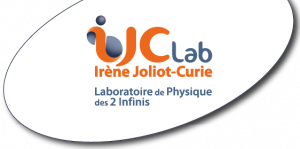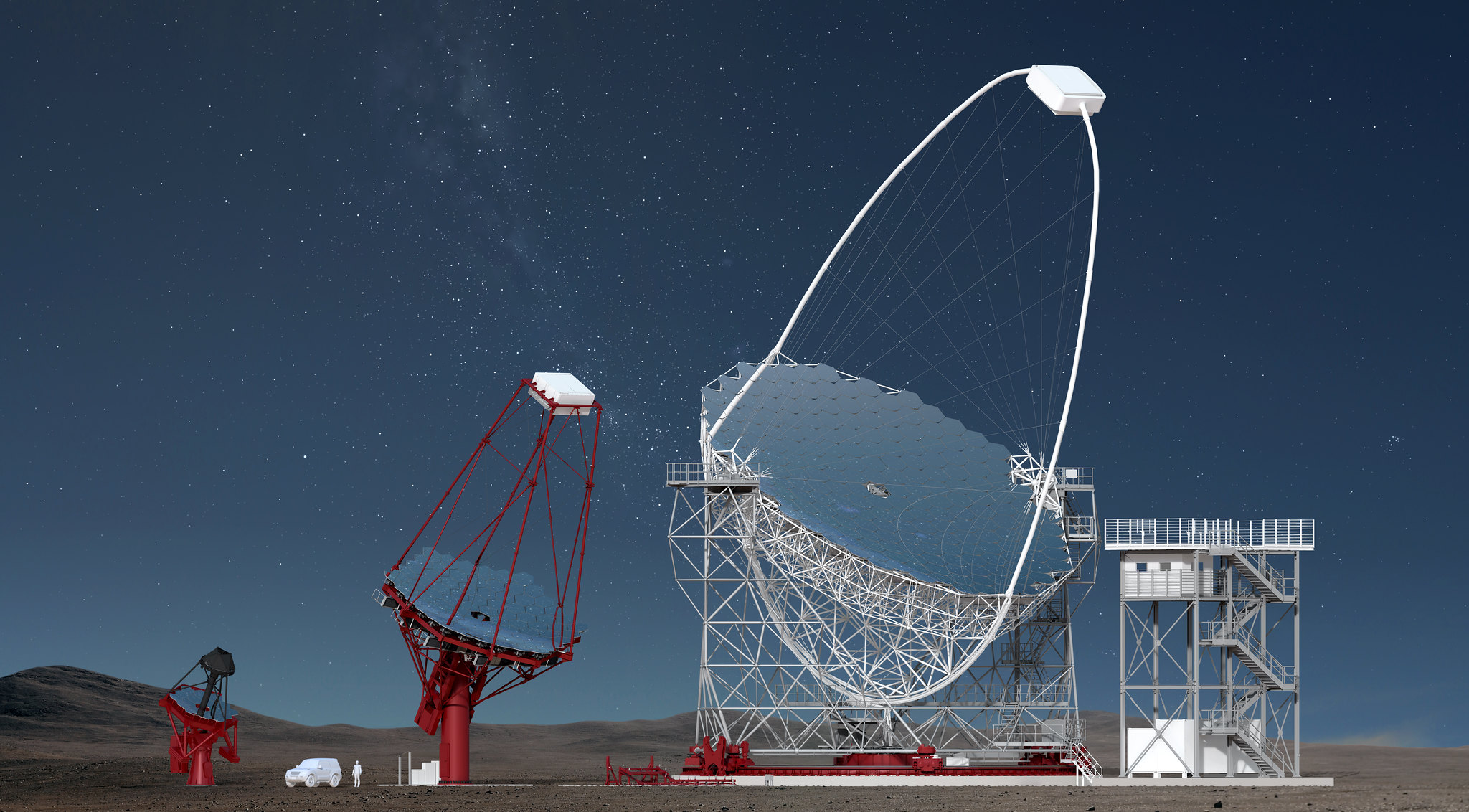
The world's largest gamma-ray observatory reaches a major milestone: on January 7, 2025, the European Commission granted the Cherenkov Telescope Array Observatory (CTAO) the status of European Research Infrastructure Consortium (ERIC). This recognition marks a turning point for CTAO, a project in which IJCLab has played a central role since 2016. Credit: Gabriel Pérez Díaz / IAC.
A revolution in high-energy universe observation
CTAO represents a monumental advancement in studying the most energetic phenomena in the universe. This large-scale international project, bringing together over 150 laboratories from about thirty countries, will establish two complementary observation sites: one in the Canary Islands, Spain, and the other in the Atacama Desert, Chile. Together, these sites will host more than 60 state-of-the-art telescopes.

Artist's impression of the future complete northern hemisphere site of CTAO at the Observatorio del Roque de los Muchachos of IAC (Instituto de Astrofísica de Canarias) located in La Palma - Credit: Gabriel Pérez Díaz / IAC.
The northern site has already begun observations with its very first telescope, paving the way for new discoveries. Four additional telescopes at the northern site and seven at the southern site will follow in 2026, enabling CTAO to become the world's most sensitive observatory for studying gamma rays. This unique infrastructure will explore fundamental questions in modern physics: the origin of cosmic rays, the behaviour of matter around black holes, and the enigmatic nature of dark matter.
Gamma rays: a window to the extreme
Gamma rays are the most energetic photons known in the universe. Tens of billions of times more energetic than visible light, they allow us to observe the most spectacular phenomena in the universe, such as stellar explosions or the vicinity of black holes. Their study is essential for understanding the mechanisms that govern our universe at very high energies.
Integrated expertise serving cutting-edge science
Since 2016, IJCLab has distinguished itself in the CTAO project through an approach that closely integrates fundamental research and technological development. This synergy is particularly embodied in the creation of NectarCAM, a sophisticated camera designed for the Medium-Sized Telescopes (MST) of CTAO. Its 1855 pixels require exceptional calibration precision to faithfully reconstruct gamma-ray energy, a challenge met through close collaboration between researchers, engineers, and technicians.
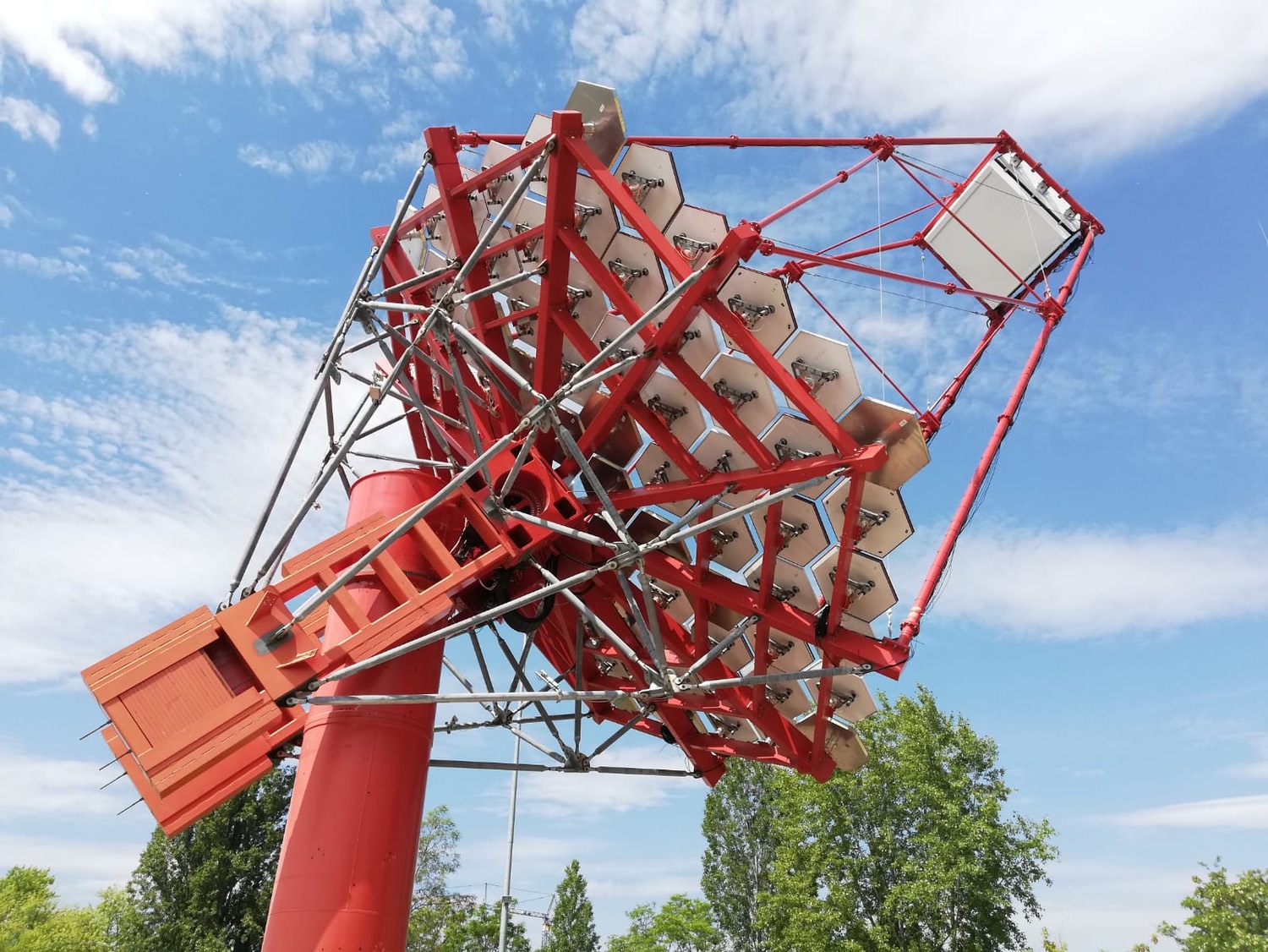
NectarCam, installed on the MST prototype, is equipped here with 427 photomultiplier tubes for photon detection - Credit: Markus Garczarczyk / DESY.
The IJCLab research team, led by Jonathan Biteau and Tiina Suomijärvi, studies the extragalactic background light and the origin of cosmic rays, particles whose energy exceeds that of LHC protons by billions of times.
The development of NectarCAM relies on an in-depth partnership between researchers and technical teams:
Mechanical aspects are handled by Kevin Pressard and Michael Josselin, who design the installation interfaces and calibration systems for this 2-ton camera. Precision manufacturing is carried out by the workshop team: Bernard Mathon, Brice Geoffroy, and Sébastien Olmo.
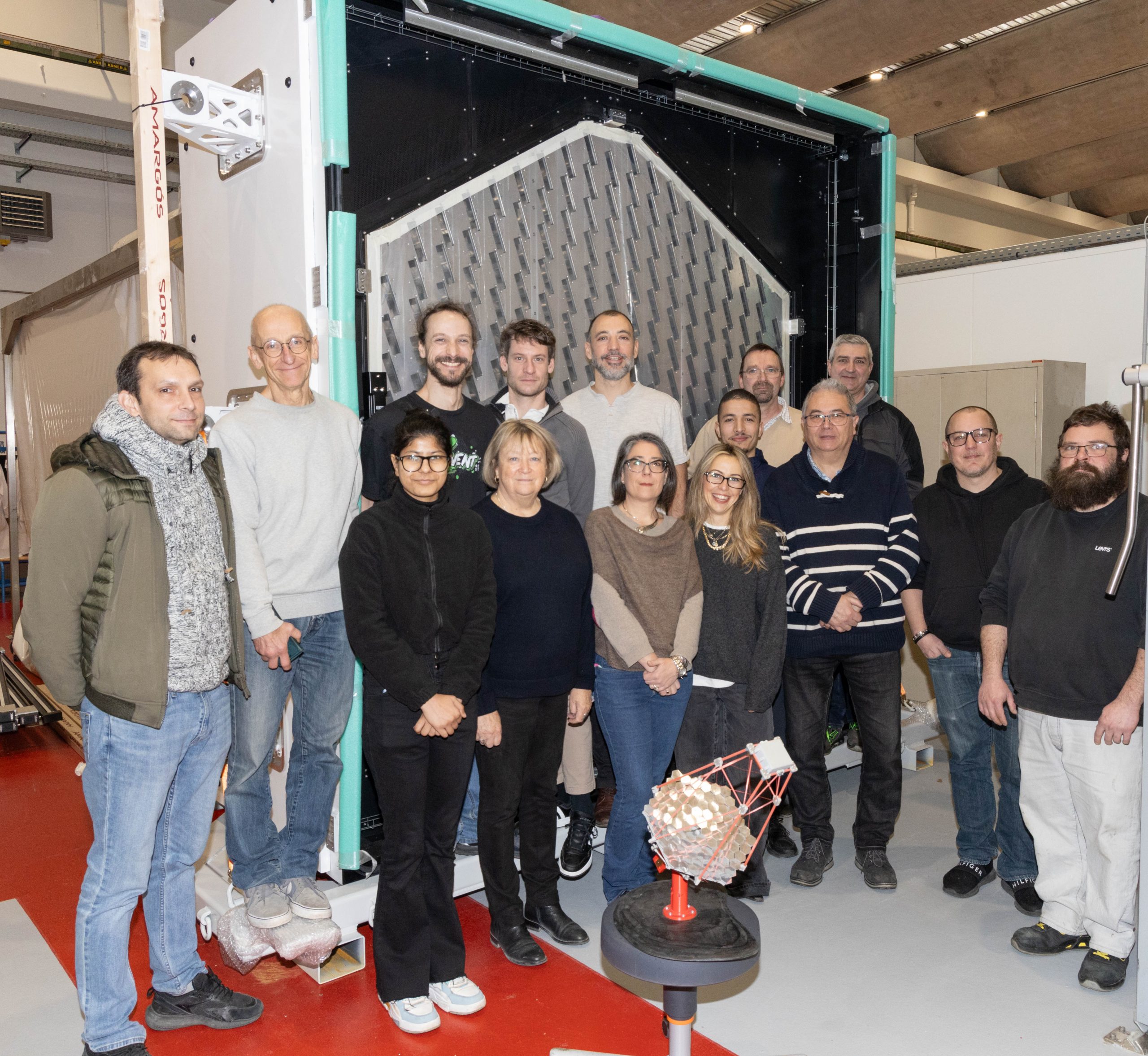
IJCLab members working on CTAO in front of NectarCAM. From left to right: Cédric Esnault, Daniel Charlet, Quentin Luce, Kevin Pressard, Jonathan Biteau, Michael Josselin, Sébastien Olmo (background); Deepanshi Singh, Tiina Suomijärvi, Giulia Hull, Federica Bradascio (front); Hossam Boutalha, Thi Nguyen Trung, Bernard Mathon, Brice Geoffroy - Credit: Dominique Longieras / IJCLab.
Single photon calibration and instrument validation are led by Giulia Hull, supported by Miktat Imre, Carlos Domingues-Goncalves, Thi Nguyen Trung and Hossam Boutalha.
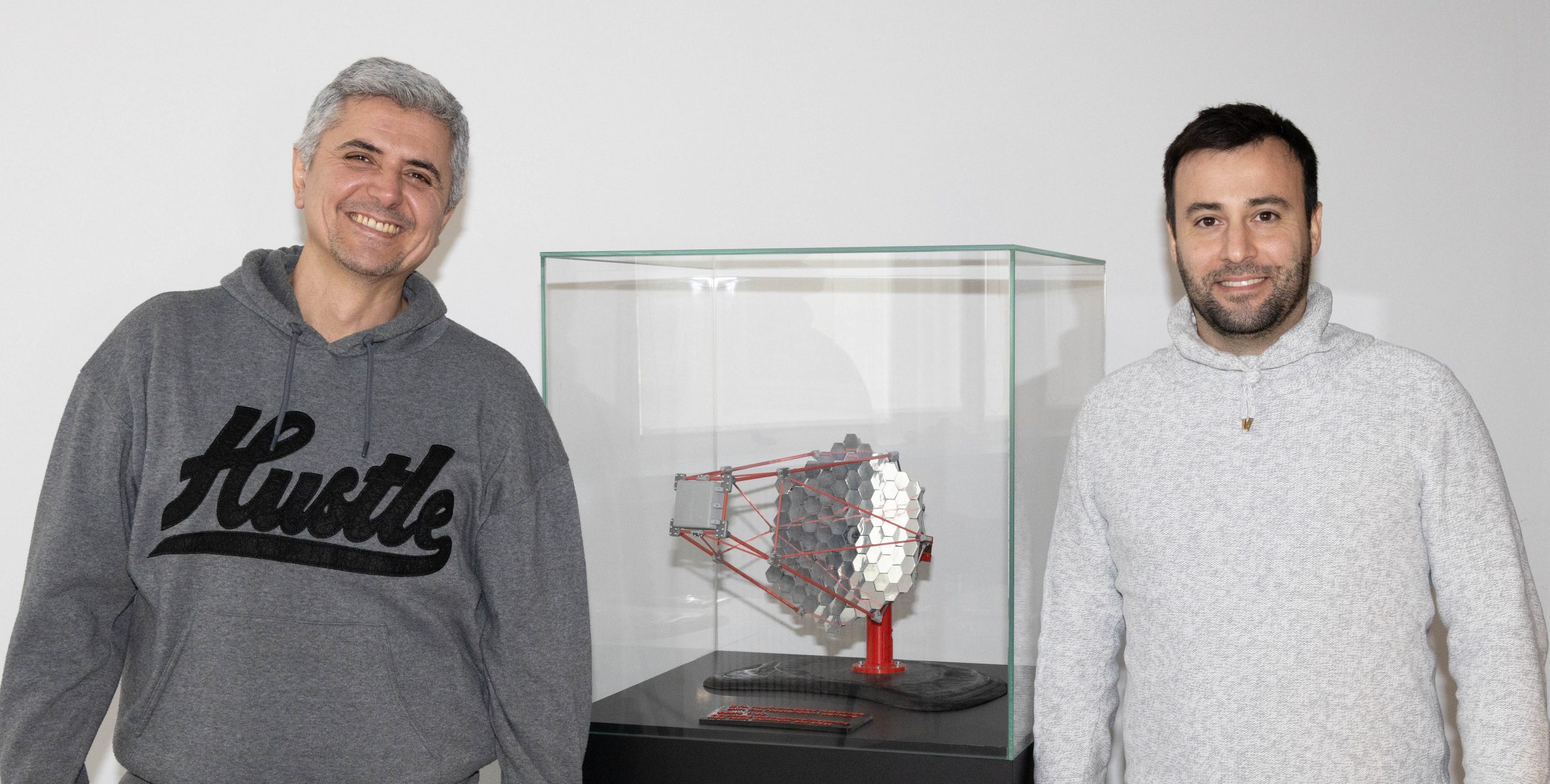
Miktat Imre and Carlos Domingues-Goncalves with a NectarCAM model at IJCLab. Credit: Dominique Longieras / IJCLab.
Scientific applications are developing in several directions: Federica Bradascio leads high-energy astrophysics research, Coline Dubos studies supernova remnants, and Anastasiia Mikhno analyzes active galactic nuclei. Quentin Luce's advances in intensity interferometry benefit from the electronics and computing expertise of Daniel Charlet, Cédric Esnault, and Monique Taurigna.
The multi-messenger astronomy component, led by Julian Hamo and Julien Peloton, will enable CTAO to respond in real-time to alerts from other observatories.
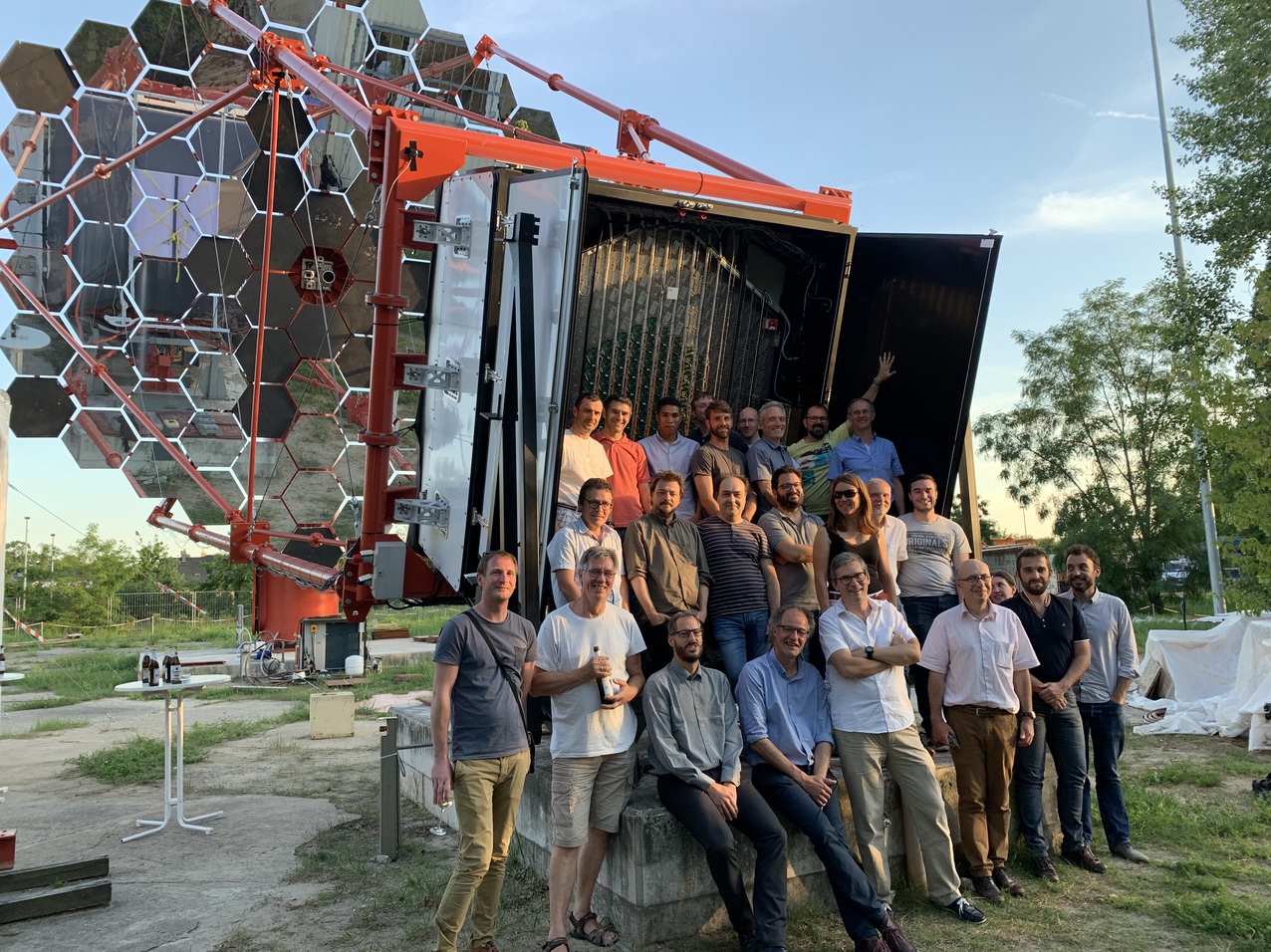
NectarCAM installed by the team on the MST prototype in Berlin-Adlershof - Credit: Markus Garczarczyk / DESY.
Promising perspectives
IJCLab team's excellence has earned it increasing responsibilities within the CTAO consortium. After leading the extragalactic group (2018-2019) and organizing the consortium's spring meeting in 2018, the team is set to lead the intensity interferometry group, developing innovative techniques to measure stellar diameters with unprecedented resolution.
The IJCLab team contributes to three major research areas within CTAO:
Cosmic Ray Origins
Researchers study galactic sources (TeV-PeV), particularly supernova remnants and stellar clusters, as well as extragalactic sources (>EeV) of cosmic rays, in particular gamma-ray bursts. This work aims to solve the century-old mystery of cosmic ray origins.
Gamma-ray Cosmology
The team analyses gamma-ray emission (GeV-TeV) from distant sources detected up to z~1, when the universe was about half its current age. Observing gamma-ray bursts and active galactic nuclei at such distances enables the study of astrophysical mechanisms, measurement of absorption by extragalactic background light, and exploration of physics beyond the Standard Model.
Multi-messenger Astronomy
In collaboration with the Fink alert broker, developed at IJCLab, the group optimizes rapid detection (<1 minute) of major cosmic events by CTAO, particularly gamma-ray bursts and active galactic nuclei flares.
Key figures
- 9 NectarCAM cameras in production
- 1855 calibrated pixels per NectarCAM camera
- Over 20 IJCLab experts mobilized
- 3 ongoing theses exploring physics frontiers
- Observations up to 10 billion light-years from Earth
CTAO's new ERIC status opens exciting perspectives for this research, ensuring funding stability and facilitating international data sharing.
Learn more
- CNRS article
- Cherenkov Telescope Array Observatory website
- CTAO Press release
- CTAO explanatory poster (PDF)
Contact
For more information about the CTAO project at IJCLab and media inquiries: communication@ijclab.in2p3.fr
